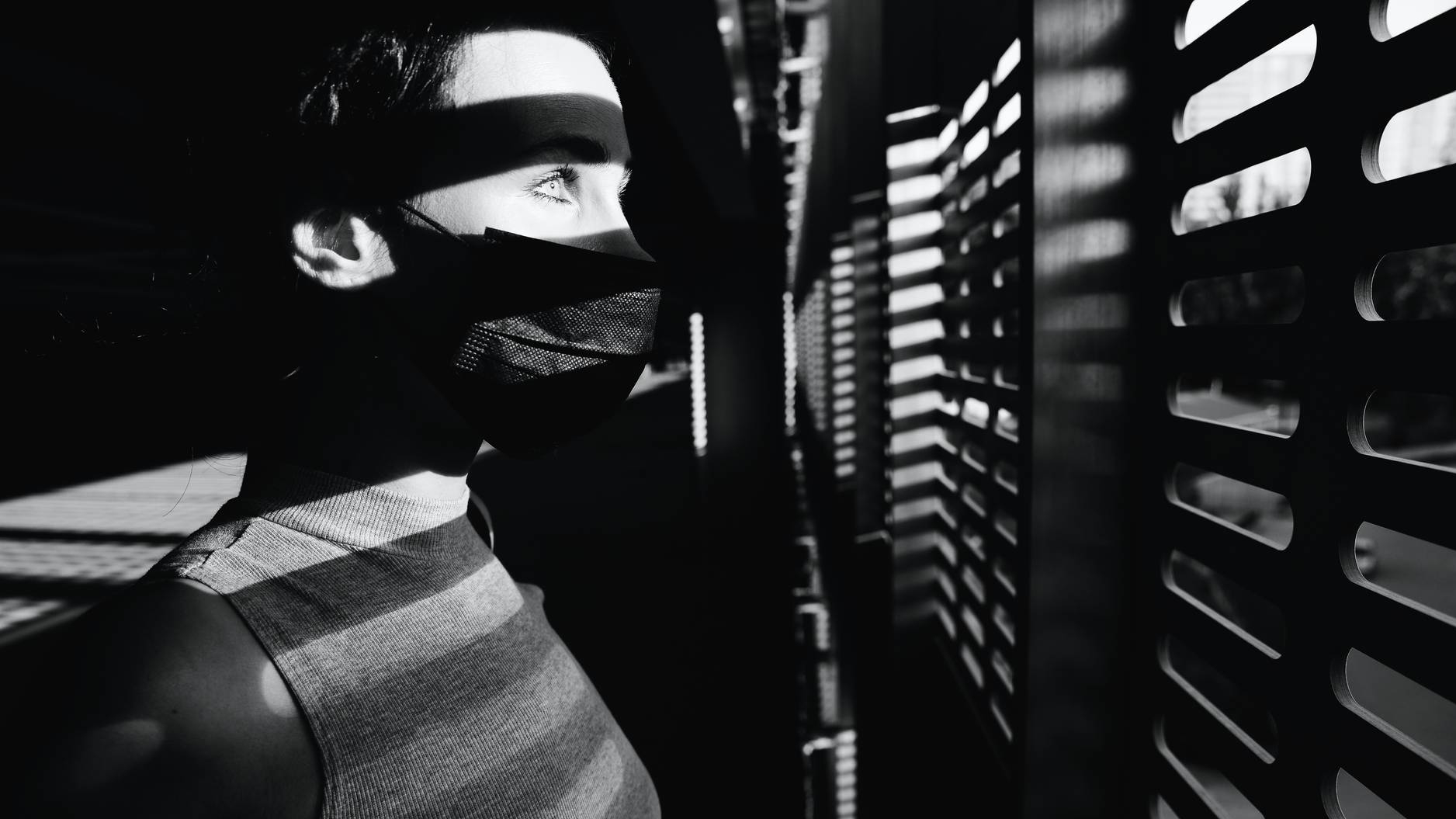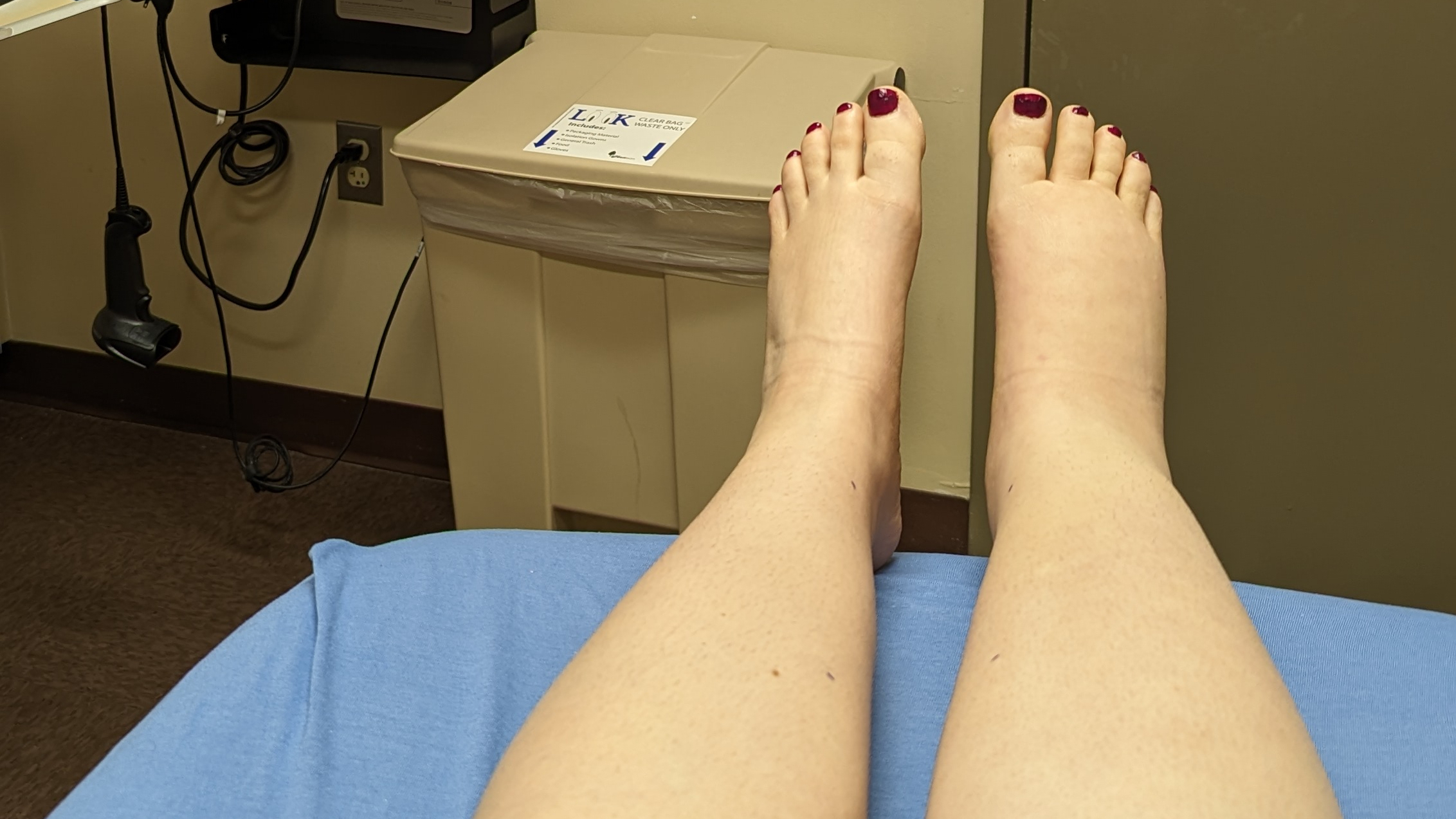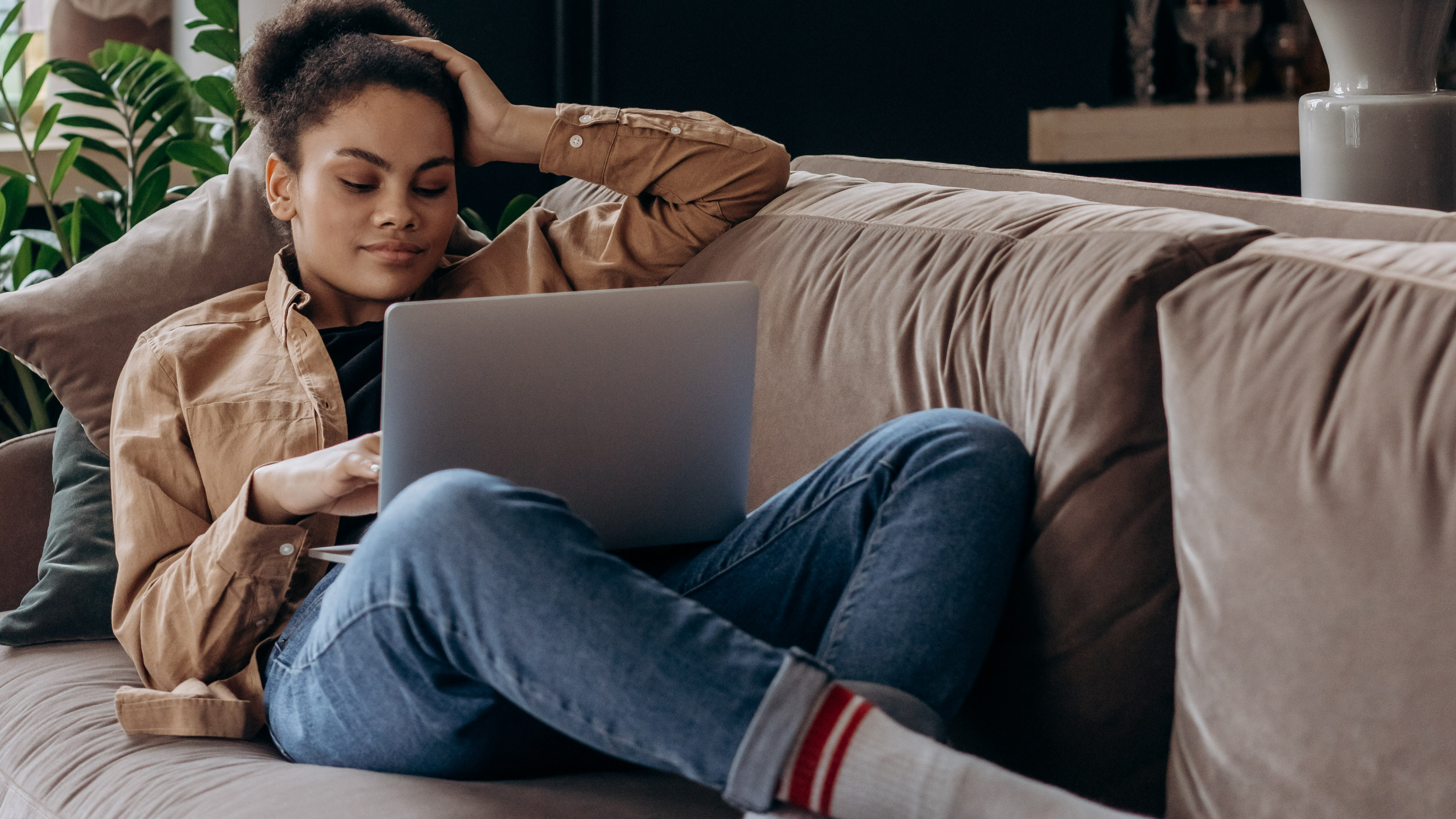“So how’s it going, kiddo?”
Because of the pandemic, I was having my lymphedema check-up remotely using telemedicine. There was a mask covering the lower half of my doctor’s face, but I could hear him smiling.
“Oh, doing okay,” I said. His eyebrows raised: after working with me for over a decade, he knew me better than that. “Wellll… alright, I’m kind of struggling with compliance a bit.”
Like most of the world, I went into isolation in early March. I explained to my doctor how, as the weeks wore on and time continued to lose any real meaning, I slipped into an increasingly apathetic mindset around my treatment routine.
I spun through my list of excuses: I’m not wearing my compression while working from home because it’s too uncomfortable sitting for long periods in my flat knits.
I’m not going for walks because, by the time my workday is done, I’m too burnt out to do anything but eat dinner and zone out in front of the television.
I’m not using my pump because — well, because I’m lazy.
As a result of my noncompliance, my symptoms worsened: my legs felt heavy and dense, and my right leg — the one most affected by lymphedema — began to swell more.

The camera wobbled a bit as my doctor ducked out of frame; when he returned, he had a mirror in his hand. He held it up to the camera so I could see my own self reflected back.
“There,” he said, pointing at the mirror. “There’s what’s getting in the way. You.”
I laughed, but my doctor was right: it was my own fault my swelling was flaring up. The truth is, there are plenty of things I could — and should — be doing to manage my lymphedema symptoms while in lockdown. It all comes down to my being proactive enough about my health to make the time to do them.
Five tips for managing lymphedema while under lockdown
The world is a different place these days. The coronavirus and COVID-19, the illness it causes, has completely upended life as we know it, and it might be a while until things settle back down into anything remotely familiar again.
Although many are unable to stay home due to work or other circumstances, the majority of us are sheltering in place. Some of us are isolating with our families or partners; some with roommates or friends. Others, like me, are weathering it alone.
It’s a weird time. Throw a chronic condition like lymphedema into the mix, and this “new normal” becomes even more complicated. We’re adapting amidst a lot of unknowns, and our lymphedema routines are having to adapt, too.
What’s a lymphie to do? Well, here’s a few tips.
1. Create a routine — and stick to it.
Routines can help you foster and maintain a sense of purpose. During this time of uncertainty and disruption, keeping a routine can be especially grounding.
Set up a schedule for yourself, at least during the weekdays. Make an effort to wake up and go to bed at consistent times, eat regular meals, and take care of your hygiene. If you live with others, coordinate your schedules so you’re able to support one another’s needs as well as your own. (For example, your partner can help get the kids set up with their online classes while you hop on that conference call.)
Create a routine around your lymphedema treatment, too. When you get up in the morning, put on a fresh set of clothes (yes, it can still be sweatpants — just not the ones you slept in) along with your compression garment. Do you use a pneumatic compression device? If so, block out time in your schedule to pump. Do you dry brush, or regularly perform manual lymphatic drainage massage? Pencil that in, too. And how about a designated night for handwashing your flat knits?
Don’t get obsessive or rigid about it: like everything in life, a healthy balance is key. If you wake up a little later one day, or neglect to do your drainage massage before bed, it’s okay — you’ll get it tomorrow.

2. Make time for movement.
Skeletal muscle contractions are one of the biggest propellants of lymph fluid up through the lymphatic vessels. That’s a jargony way of saying, “exercise helps you move your lymph.”
We all know exercise is incredibly important to our overall health and well-being, but it’s especially crucial to us lymphies. Try these tips for getting your lymph moving while at home:
- Do a few repetitions of gentle, low-impact exercises.
- Follow along with YouTube videos of exercises specifically designed for arm, leg, and head and neck lymphedema.
- Start a daily yoga practice with one of the many free videos available online.
- If you’re able, go outside and take a walk around your block or a nearby park. (Just be sure to follow your city’s masking and distancing guidelines if going out in public.)
- If you’re unable to go outside or you live in an apartment building, see if you can climb a few flights of stairs, or walk a couple laps around your living space.
- Get virtually inspired — and encouraged — through online fitness groups like Lymphie Strong Running & Fitness Club for Lymphedema.
- Put on some of your favorite tunes and dance around your bedroom. (Hairbrush microphone optional.)
However you want to do it, just do it. Aim for fifteen or thirty minutes a day while wearing your compression. You’ve totally got this.

3. Adapt your environment to your needs, lymphedema and otherwise.
We’re all spending a lot more time at home lately — might as well make it comfortable. Create a space that’s lymphie-friendly by setting up an “elevation station” using a leg rest or a stack of pillows. Beat the heat by keeping the temperature of your environment cool; if you don’t have central air, invest in a small portable fan or two to ensure your lymphie limb is nice and chilled.
If you’re working from home, make sure your workspace is conducive not only to productivity, but to your lymphedema as well:
- If you have lower extremity lymphedema, fit a leg rest or foot stool beneath your desk to keep your limb elevated. Make an effort to get up and move at regular intervals, too.
- If you have upper extremity lymphedema, get a wrist cushion for your keyboard and/or mouse so your arm is kept at an ergonomic position. You may need to get a pillow for your chair as well: sitting at your desk at an appropriate height will keep your arms at a more comfortable angle, and assist with circulation.
- Get in the habit of performing decongestive exercises when you can, even if it means setting a reminder on your phone or calendar to do it. Tools like the Trampolette™ or Rollerette™ are helpful decongestive aids, too.
One of the upsides of being at home rather than the office is that you can do whatever you need to accommodate your lymphedema. For example, I sometimes wear my Solaris Tribute garments in lieu of pants — and the colleagues in my Zoom meetings are none the wiser!

4. Lean on your support system.
There’s no denying that things are pretty tense right now. You may be experiencing increased feelings of anxiety, loneliness, anger, or sadness, or some ever-changing combination of these. It can be overwhelming.
Be proactive in managing these feelings by connecting with your support system. Reach out to a friend or family member — with free video chat services like Skype, Zoom, and Google Duo, it’s easy to get some much-needed face-to-face time with your loved ones no matter where you are.
For lymphie-specific support, pop into one of the many online lymphedema groups to connect with the community, or browse lymphedema-related hashtags on Instagram and Twitter. Whether you’re looking for an empathetic ear or seeking advice, there’s thousands of lymphedema patients around the globe who are ready and willing to share their strength and hope with you.
Here are additional resources and strategies for managing mental health during the pandemic:
- Coronavirus: Mental Health Coping Strategies
- The National Alliance on Mental Illness’s COVID-19 Resource and Information Guide
- American Psychological Association’s COVID-19 Information and Resources
- Anxiety and Depression Association of America’s Coronavirus Corner

5. Do something fun and engaging!
Now more than ever, it’s important not to neglect your sense of fun.
Use this time to get into some hobbies or interests you’ve been wanting to explore. Catch up on your favorite TV shows, or tackle that list of must-see movies. Host a virtual book club with your friends, holding weekly discussions over video chat. Get into journaling, or maybe do a little doodling. Challenge yourself to declutter your home one room at a time, tossing or donating things you no longer need.
Here are some more fun ideas:
- Take a free course from an Ivy League or another institution.
- Visit a museum or a national park — even Mars! — from the comfort of your couch. (See more exciting suggestions here.)
- Fill your schedule with online events; from baking classes and virtual writing hours to open mic nights and Qigong, you’re bound to find something you like.
- Borrow and read e-books and audiobooks from your local public library for free using the Libby app, or access over 60,000 e-books through Project Gutenberg.
- Stream audio and video of over 100 concerts from D.C.’s 9:30 Club.
- Catch up on the latest in lymphatic research by watching virtual LE&RN Symposiums.
Check out these comprehensive lists of free entertainment and activities for even more suggestions to keep you occupied (and sane) while at home.
As for me? I’ve gotten into collaging!
Remember: you’re not alone.
Living with lymphedema can be isolating, even when we’re not in the midst of a pandemic.
But just think: staying socially and physically distant is one of the most loving, kind acts we can do right now for others. And just because we need to stay apart right now doesn’t mean we’re alone.
A group of physiotherapists from around the world put together this video for the lymphedema patient community. When I’m having a particularly hard time, I like to watch it and remember just how strong our global support network is. I hope it helps you feel the same.
In the meantime: be gentle with yourself. We’re living with a lot of uncertainty right now, but you are resilient and adaptable, and you are surviving. Stay home and stay elevated. 💙
https://www.instagram.com/tv/CAAviltB6X8/




Leave a Reply to Gumbo YentaCancel reply